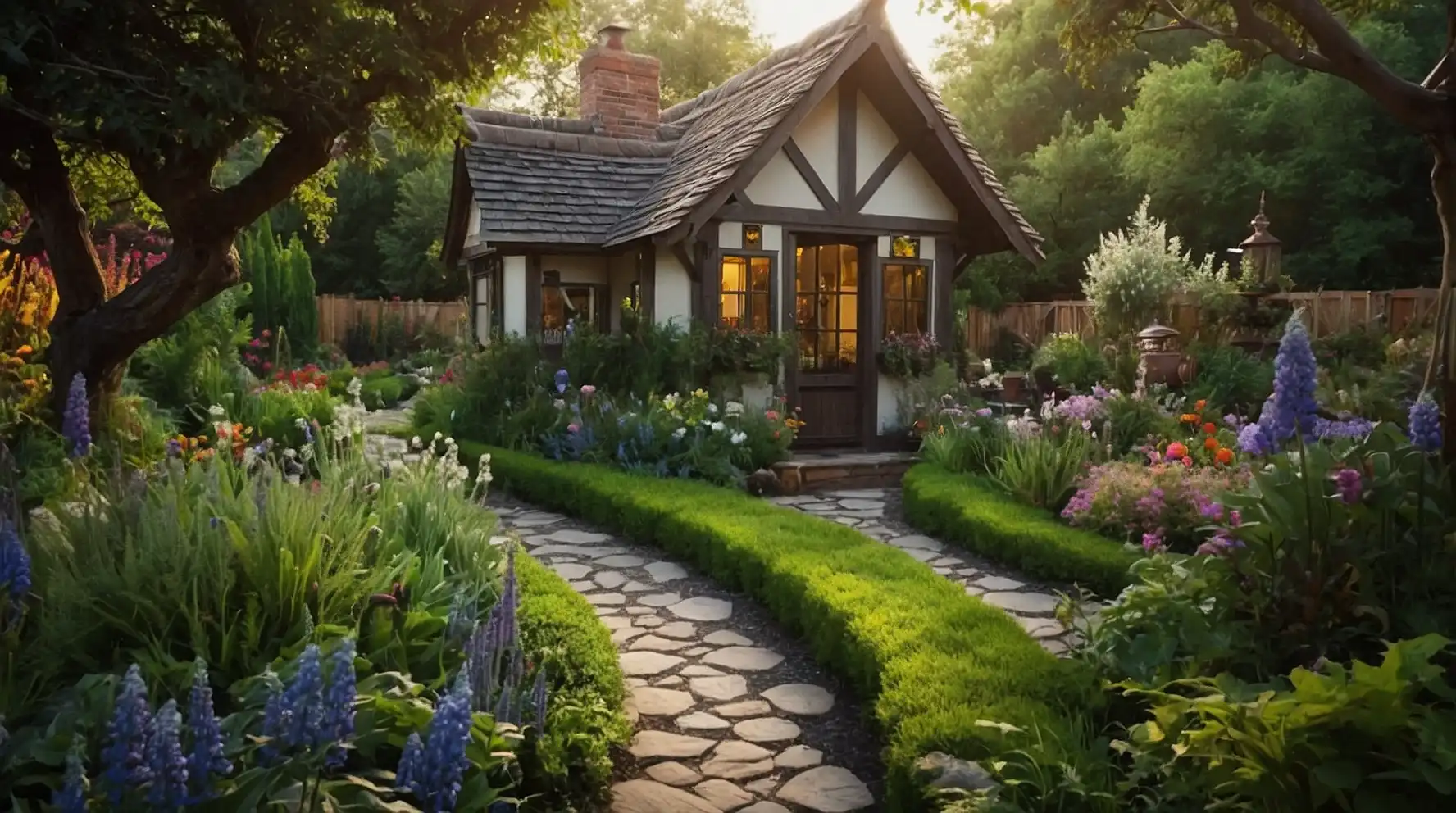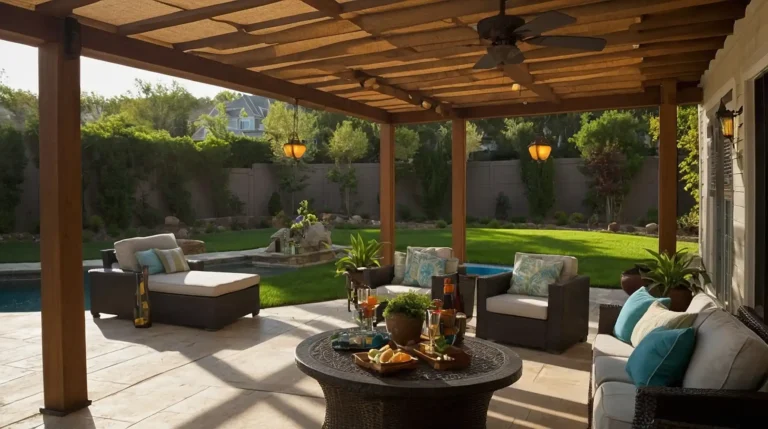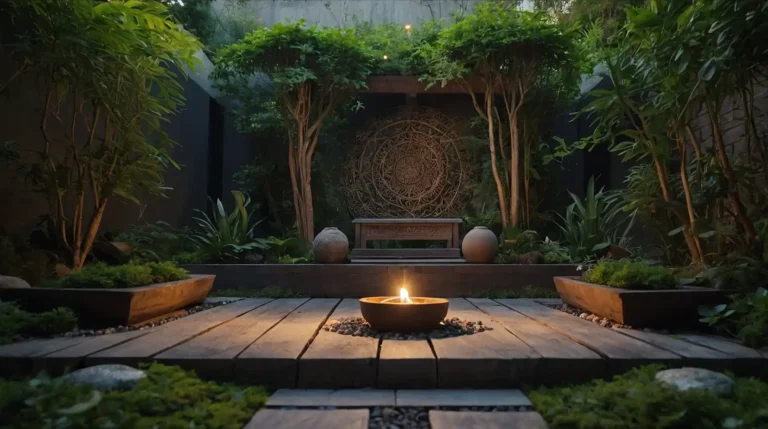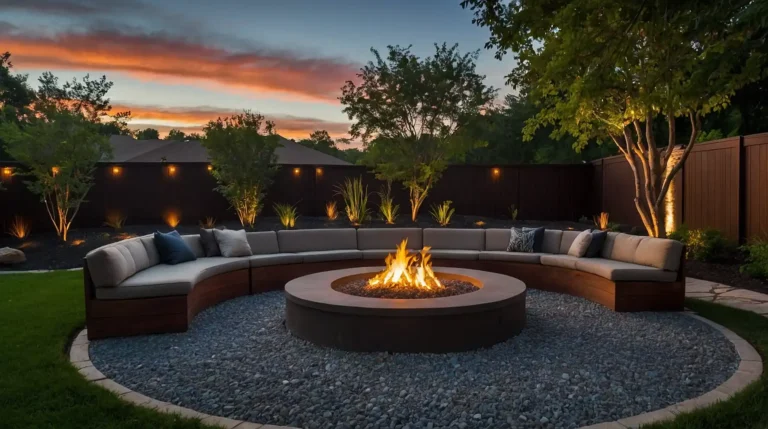27 Magical Cottage Garden Design Ideas That Transform Your Outdoor Space
Dreaming of a charming garden that looks like it belongs in a storybook?
Cottage gardens offer that perfect blend of whimsy and function that gardeners have cherished for centuries.
These enchanting spaces combine abundant flowers, herbs, and vegetables in a seemingly effortless design that welcomes butterflies, bees, and birds.
The beauty lies in their organized chaos—carefully planned to look delightfully unplanned.
Whether you have a sprawling yard or tiny urban patch, these 27 cottage garden ideas will help you create your own magical outdoor retreat.
Get ready to embrace the cottage aesthetic that makes these gardens so irresistibly inviting!
1: Create Curved Pathways
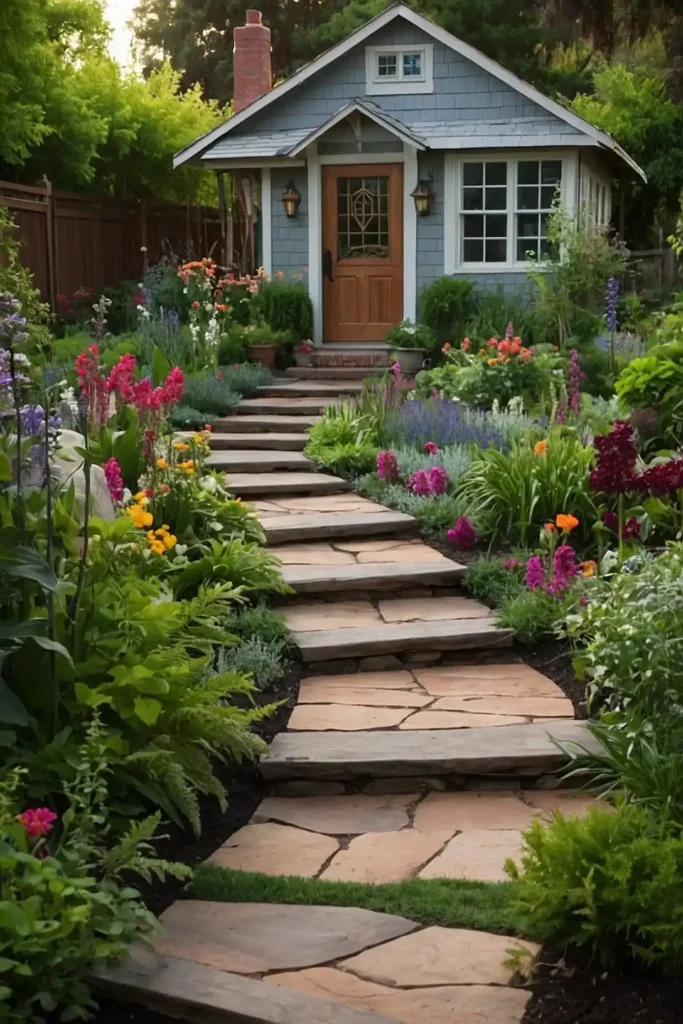
Replace straight walkways with winding, informal paths that invite exploration through your garden.
Curved lines feel more natural and create a sense of journey and discovery.
Materials like reclaimed brick, flagstone, or gravel add character and age.
Allow low-growing plants like thyme or chamomile to spill over edges, softening the boundaries between path and garden.
2: Plant in Abundant Layers
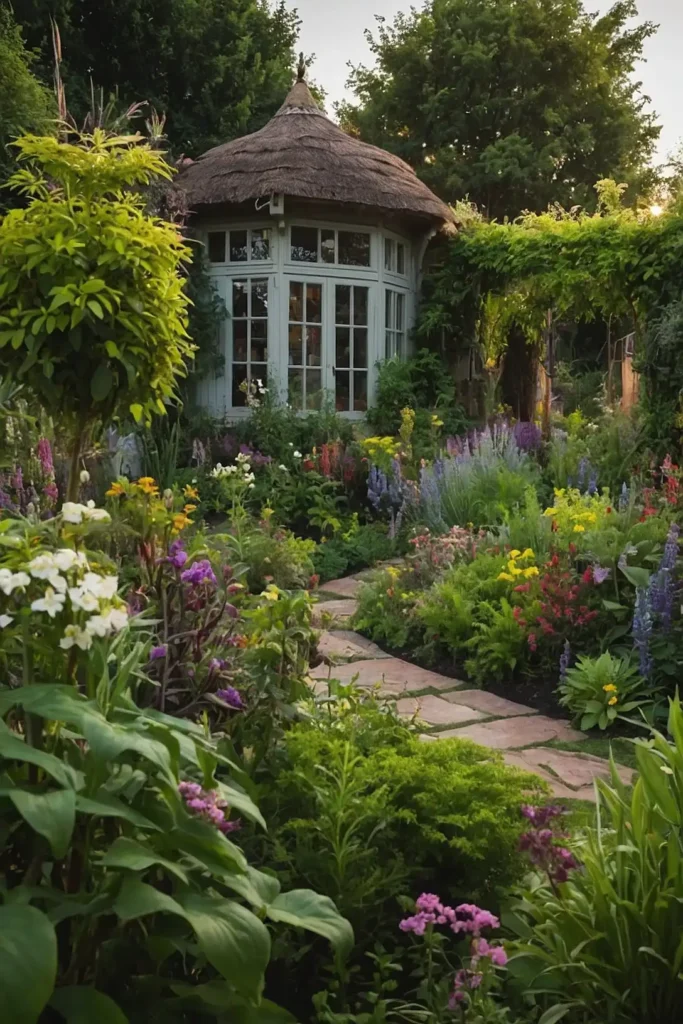
Design your garden with three distinct layers—tall background plants, mid-height fillers, and low-growing edging plants.
This creates the lush, overflowing appearance essential to cottage gardens.
Place taller specimens like hollyhocks, foxgloves, and delphiniums at the back of borders.
Fill the middle with peonies, roses, and lavender, then edge with alyssum, dianthus, or forget-me-nots.
3: Embrace Self-Seeding Flowers

Incorporate plants that happily self-seed, creating natural colonies that fill spaces and evolve your garden over time.
This adds the spontaneous charm cottage gardens are famous for.
Reliable self-seeders include columbine, poppies, nigella, and forget-me-nots.
Allow them to drop seeds where they may, only removing seedlings that appear in unwanted locations.
4: Mix Vegetables With Flowers

Break free from traditional vegetable rows by integrating edibles throughout your flower beds.
This practical approach provides both beauty and bounty in limited space.
Plant rainbow chard, purple kale, and climbing beans for height and structure.
Add nasturtiums, calendula, and borage as both beautiful and edible companions that attract beneficial insects.
5: Install a Charming Gate
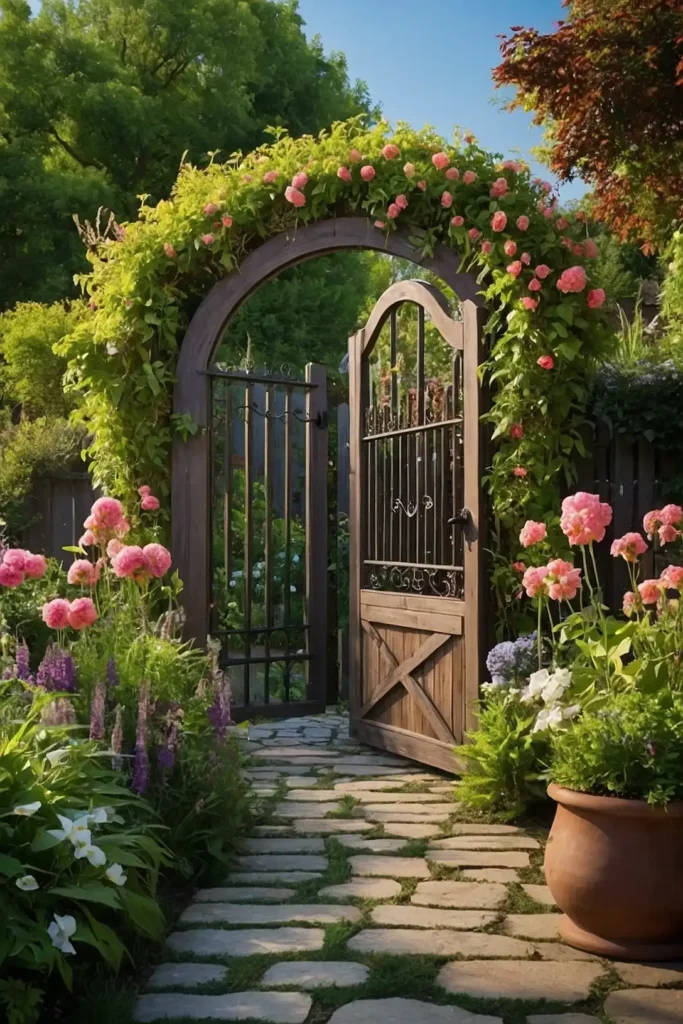
Mark the entrance to your cottage garden with a distinctive gate that sets the tone for what lies beyond. This creates an important transition point and focal feature.
Choose materials that weather beautifully, like wooden arches covered with climbing roses or a vintage metal gate.
Add whimsical details like an old-fashioned latch or bell to enhance the experience of entering.
6: Add a Birdbath Focal Point
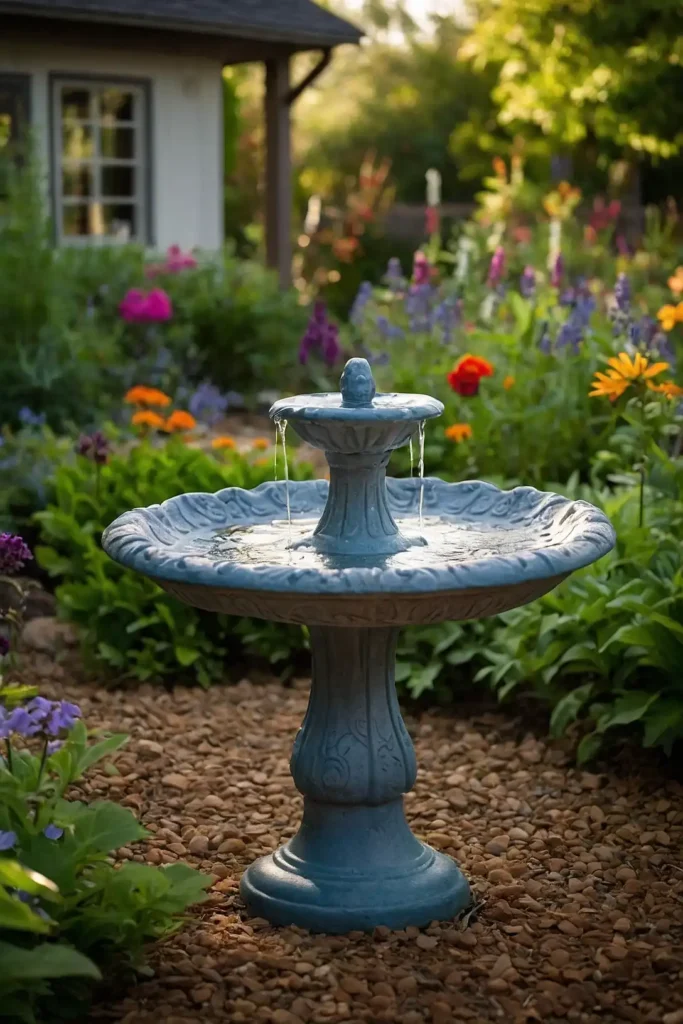
Place a decorative birdbath at a key sightline to serve as both wildlife habitat and artistic focal point. Birds add movement, sound, and life to your garden.
Choose a design with some age and character—weathered stone or antique ceramic works perfectly.
Position it where you can enjoy the visiting birds from your favorite garden seat or window.
7: Plant Fragrant Herbs Along Paths
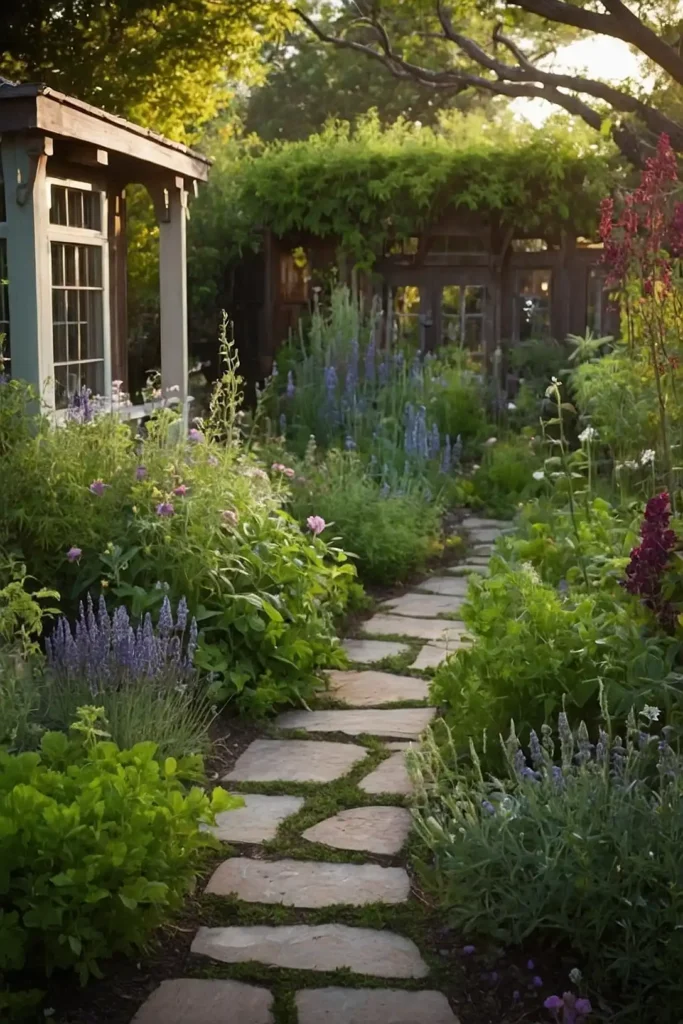
Line your garden walkways with aromatic herbs that release their scent when brushed against.
This engages another sense as visitors wander through your garden.
Classic choices include lavender, rosemary, thyme, and sage—all provide wonderful fragrance, culinary uses, and attract pollinators.
Their typically drought-tolerant nature also makes maintenance easier in these high-traffic areas.
8: Include Climbing Roses
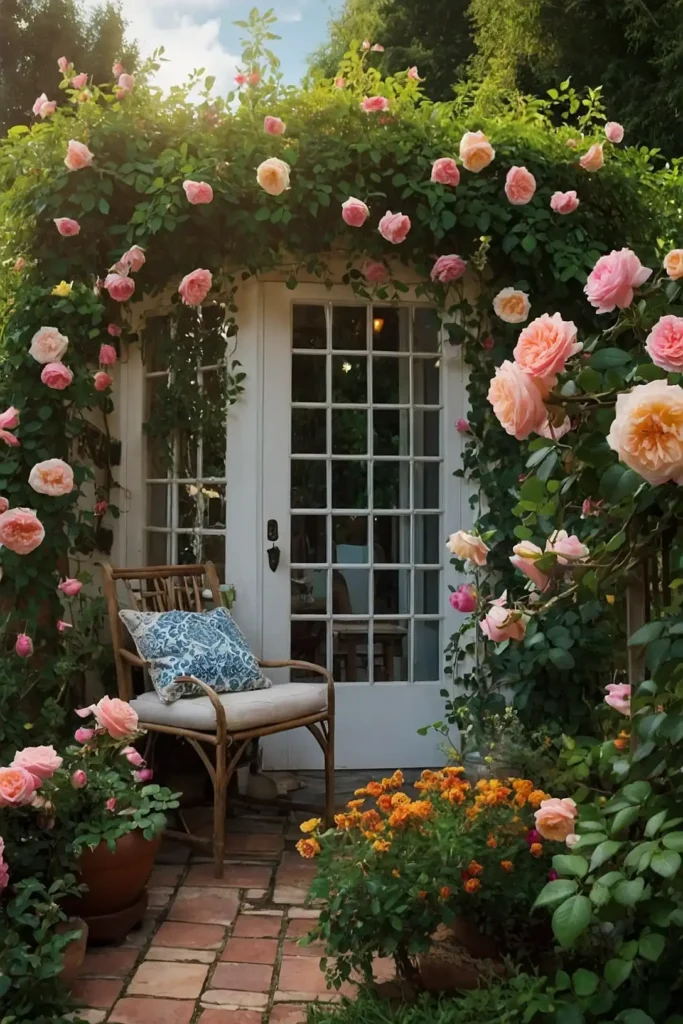
Train climbing roses over arches, fences, or trellises to add vertical interest and romantic charm. Few plants epitomize cottage gardens better than roses.
Select repeat-flowering varieties with good disease resistance like ‘New Dawn’ or ‘Zephyring Drouin’ for longest bloom time.
The vertical element draws the eye upward and creates a sense of enclosure.
9: Create Small Garden Rooms
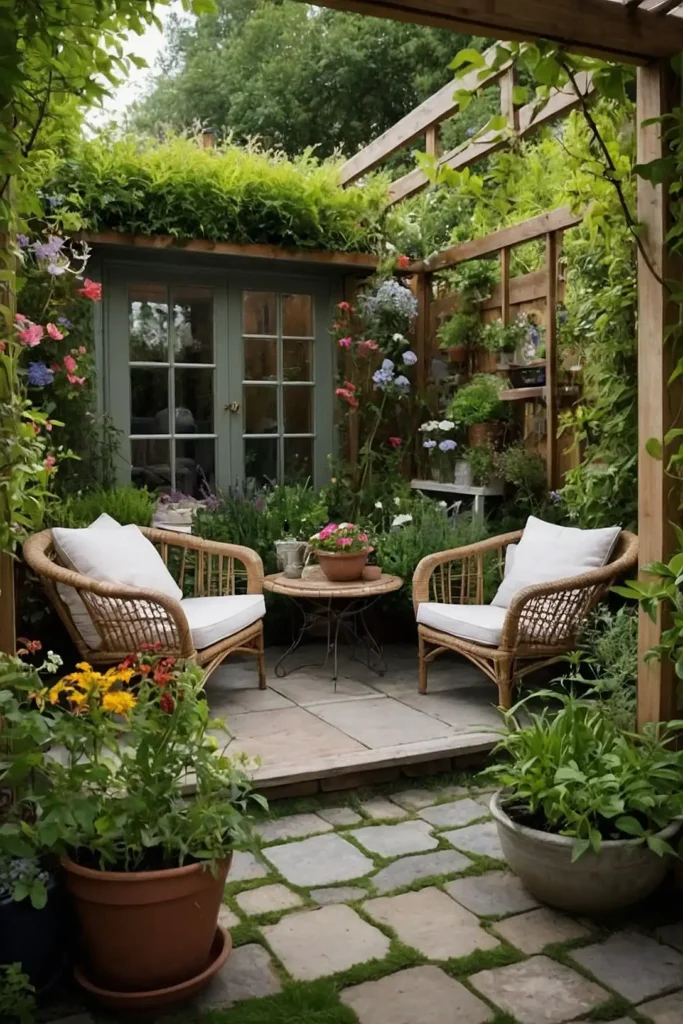
Divide your space into distinctive “rooms” using shrubs, trellises, or short hedges as dividers. This creates a sense of mystery and gives your garden a larger feel.
Each section can have its own character—perhaps an herb garden near the kitchen, a cutting garden in a sunny spot, and a shady reading nook under a tree.
10: Incorporate Vintage Containers
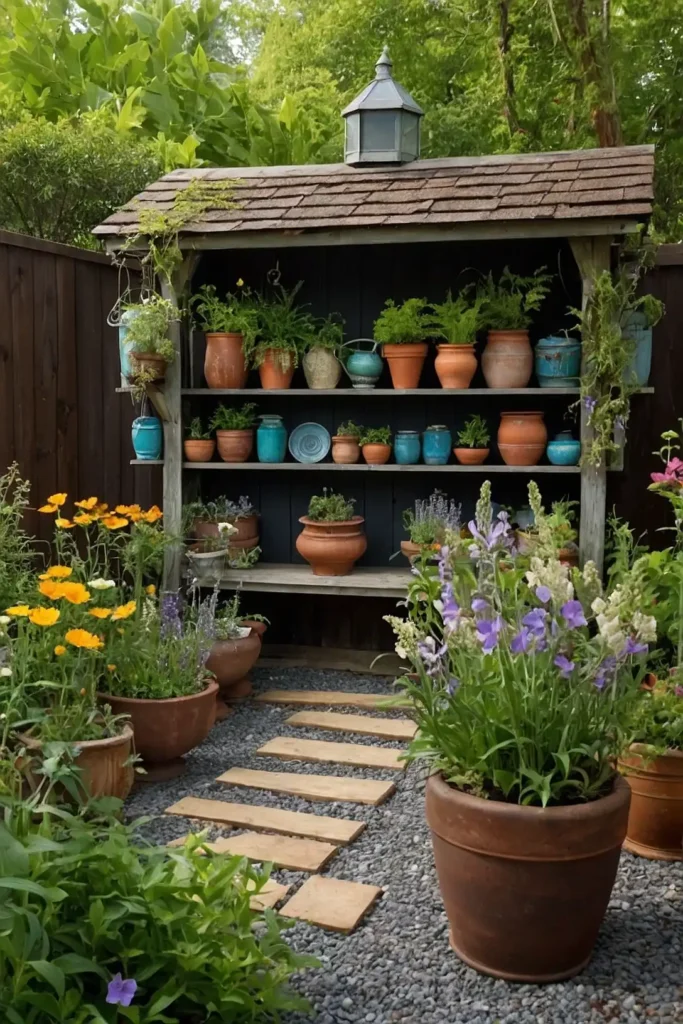
Repurpose unusual vintage items as planters—old washtubs, wooden crates, or even worn-out boots.
These unexpected elements add personality and story to your garden.
The patina of age on these containers complements the cottage aesthetic perfectly.
Fill them with trailing plants that cascade over the edges for maximum charm and impact.
11: Plant a Classic Cutting Garden

Dedicate a sunny section to flowers specifically grown for indoor arrangements. This practical tradition connects your indoor and outdoor spaces beautifully.
Plant reliable cutting varieties like zinnias, cosmos, snapdragons, and dahlias in rows for easy access.
The bonus? Frequent cutting encourages more blooms, keeping your garden productive and colorful.
12: Install a Rustic Arbor
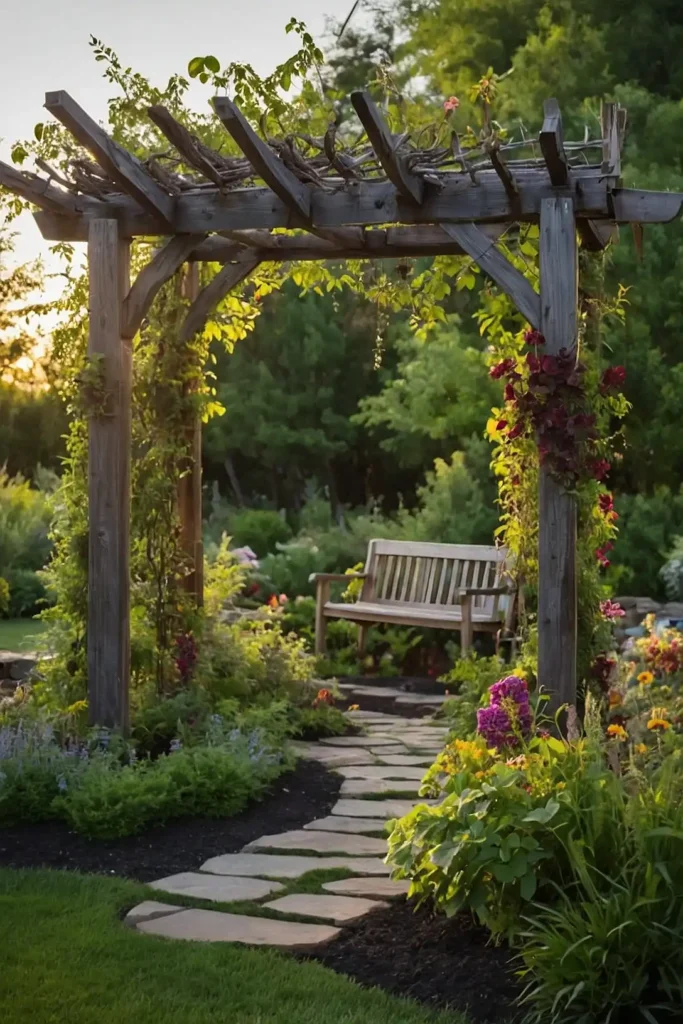
Build or purchase a wooden arbor to create a defined entrance or seating area within your garden.
These structures add architectural interest and support climbing plants.
Position your arbor at a transition point between garden rooms or at the end of a path.
Cover it with climbing roses, clematis, or honeysuckle for fragrance and dappled shade.
13: Embrace Imperfection
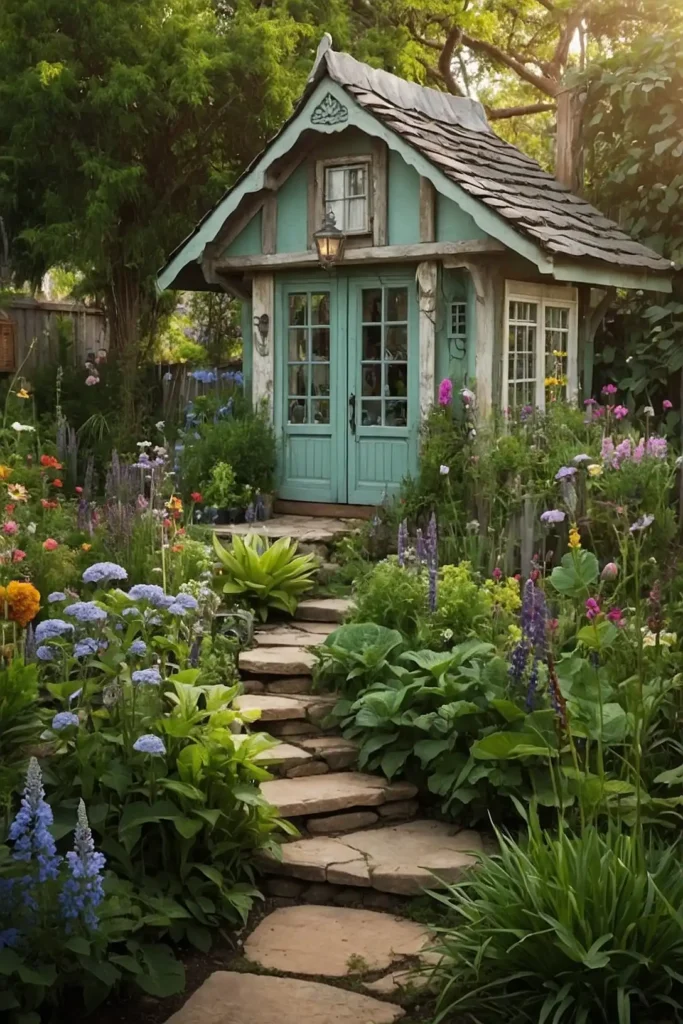
Allow some plants to lean, seeds to drop, and stems to weave together naturally. This controlled wildness gives cottage gardens their distinctive lived-in charm.
Resist the urge to stake everything perfectly upright or deadhead every spent bloom.
Some seed heads provide winter interest and food for birds, while natural plant forms create delightful informal beauty.
14: Create a Herb Spiral
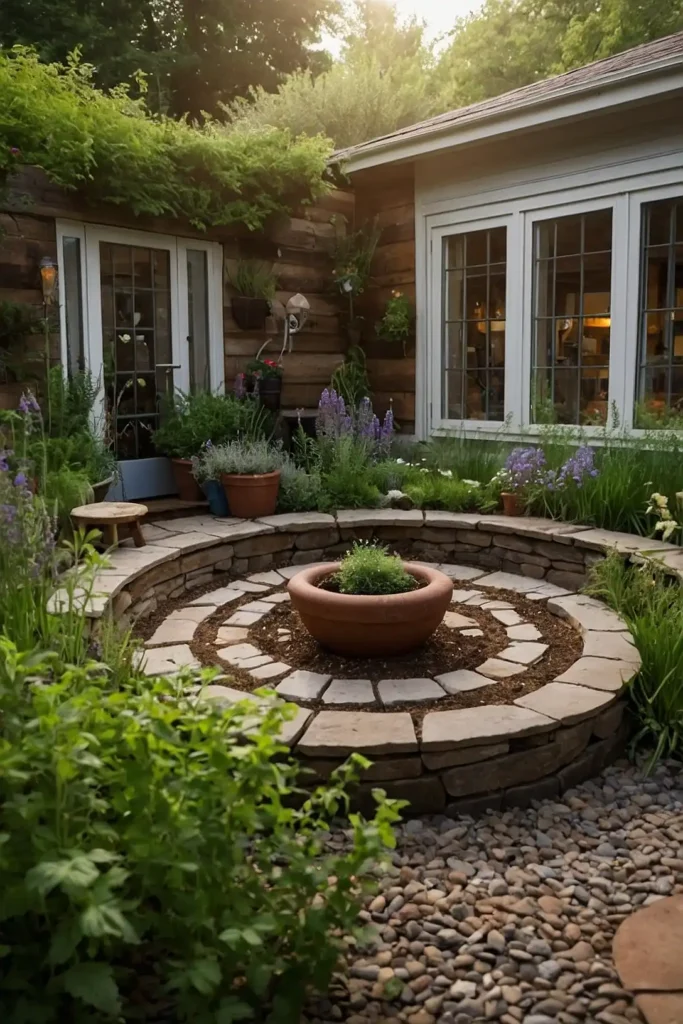
Build a spiral-shaped raised bed that creates multiple microclimates for growing different herbs in a compact space.
This clever design maximizes growing area while creating visual interest.
Plant drought-tolerant herbs like rosemary and thyme at the top, with moisture-loving varieties like mint and parsley at the bottom.
The spiral design creates excellent drainage and easy access for harvesting.
15: Add a Rustic Bench
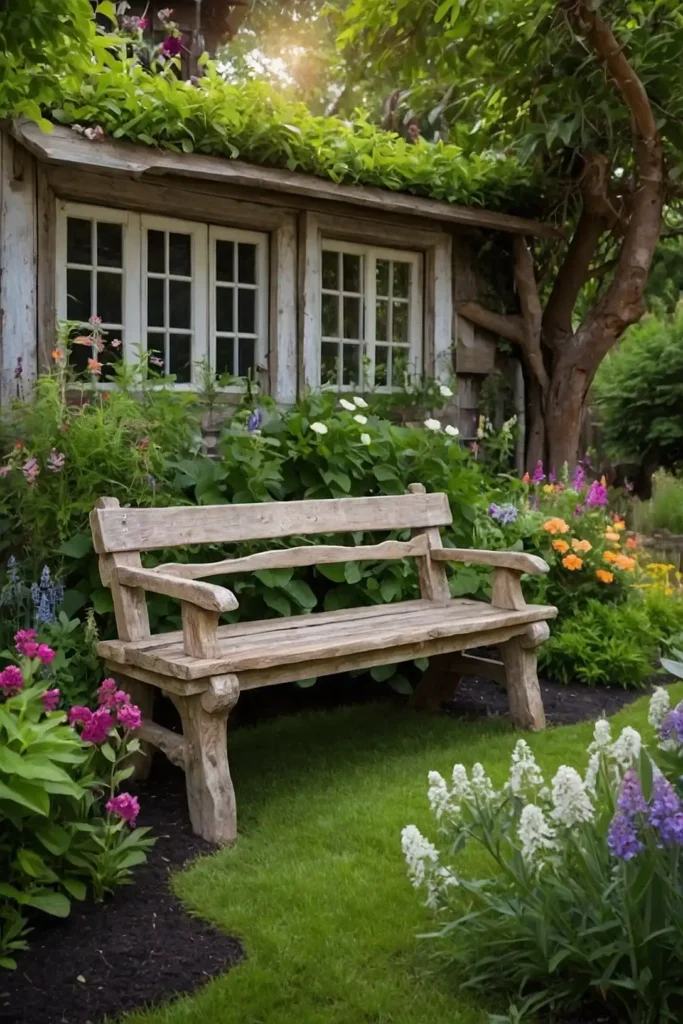
Place a weathered wooden bench in a strategic spot where you can sit and enjoy your garden’s beauty.
Seating invites you to linger and appreciate the space you’ve created.
Position your bench where it catches morning sun or afternoon shade, depending on your climate.
Plant fragrant flowers nearby to enhance the sensory experience of sitting in your garden.
16: Plant Old-Fashioned Hollyhocks
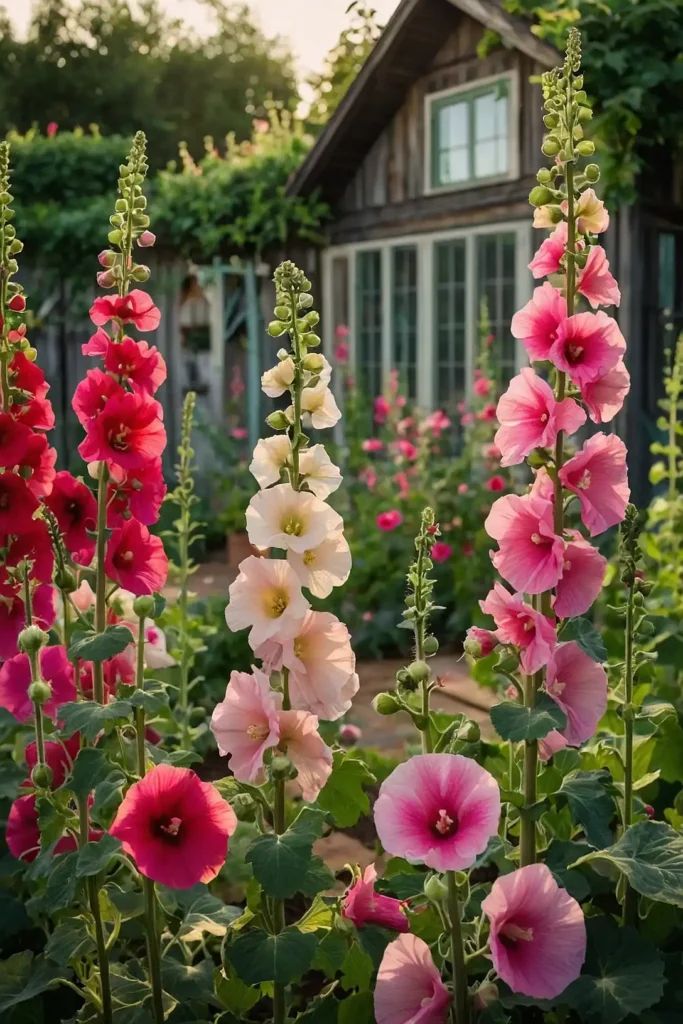
Grow traditional hollyhocks against fences or walls for dramatic height and old-world charm.
These cottage garden classics create stunning vertical architecture with minimal effort.
Their tall spires of blooms (reaching 6-8 feet) create dramatic backdrops for shorter plants.
Despite their stature, they require little staking and reliably self-seed for future displays.
17: Use Informal Hedges
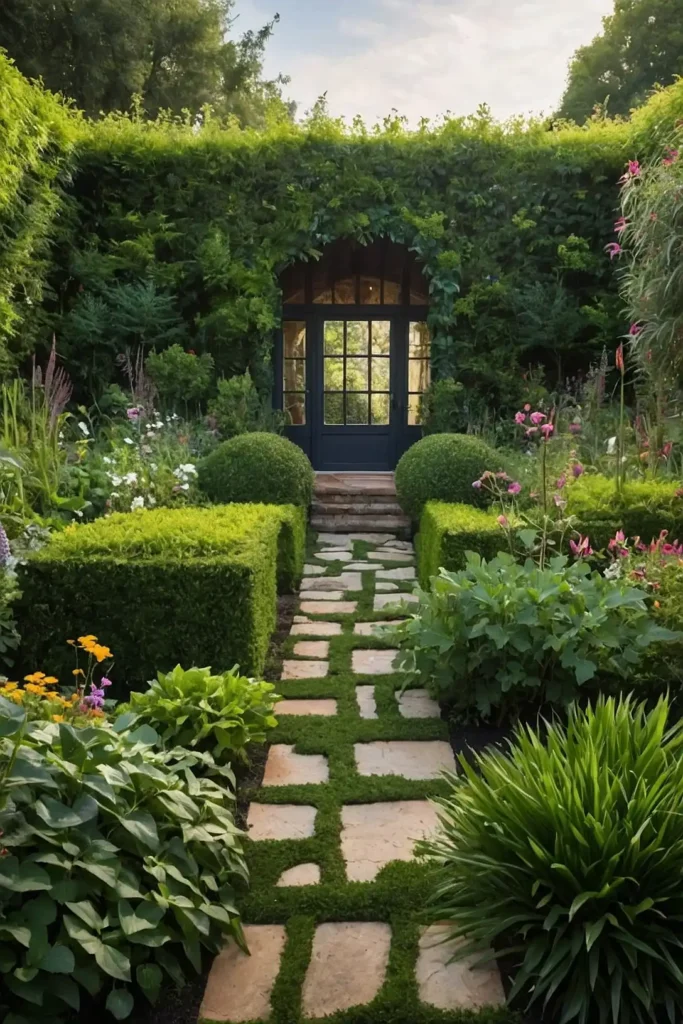
Create loose, flowering hedges rather than tightly clipped formal ones to establish garden boundaries.
This softer approach feels more welcoming while still providing structure.
Try butterfly bush, lilac, or hydrangea for beautiful, wildlife-friendly options.
Allow them to maintain their natural shapes with just enough pruning to keep passages clear.
18: Add Whimsical Garden Art

Incorporate unexpected artistic elements that reflect your personality and add year-round interest. These personal touches make your garden uniquely yours.
Weather-resistant pieces like metal sculptures, mosaic stepping stones, or repurposed farm tools add character even in winter months.
Position them as surprises to discover along garden paths.
19: Create Tapestry Mixed Borders
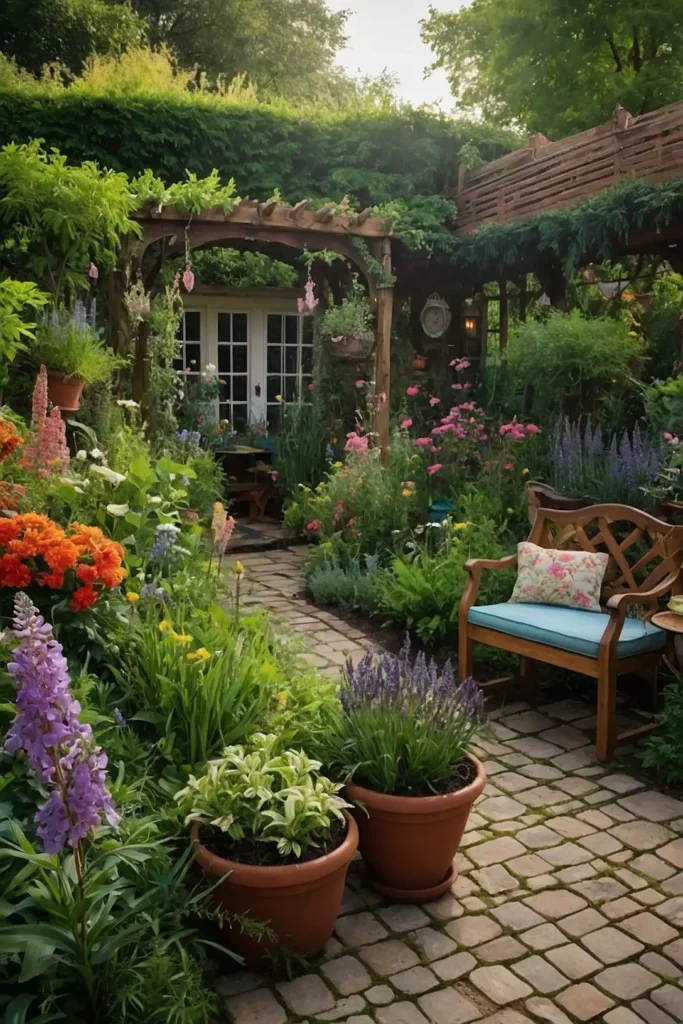
Design borders where plants grow together in a tapestry-like effect rather than in distinct clumps.
This intermingling creates the signature cottage garden look of abundant diversity.
Plant in drifts of 3-5 plants instead of single specimens, allowing them to grow into each other slightly.
This creates a more naturalistic effect than rigid spacing and formal arrangements.
20: Install a Simple Water Feature
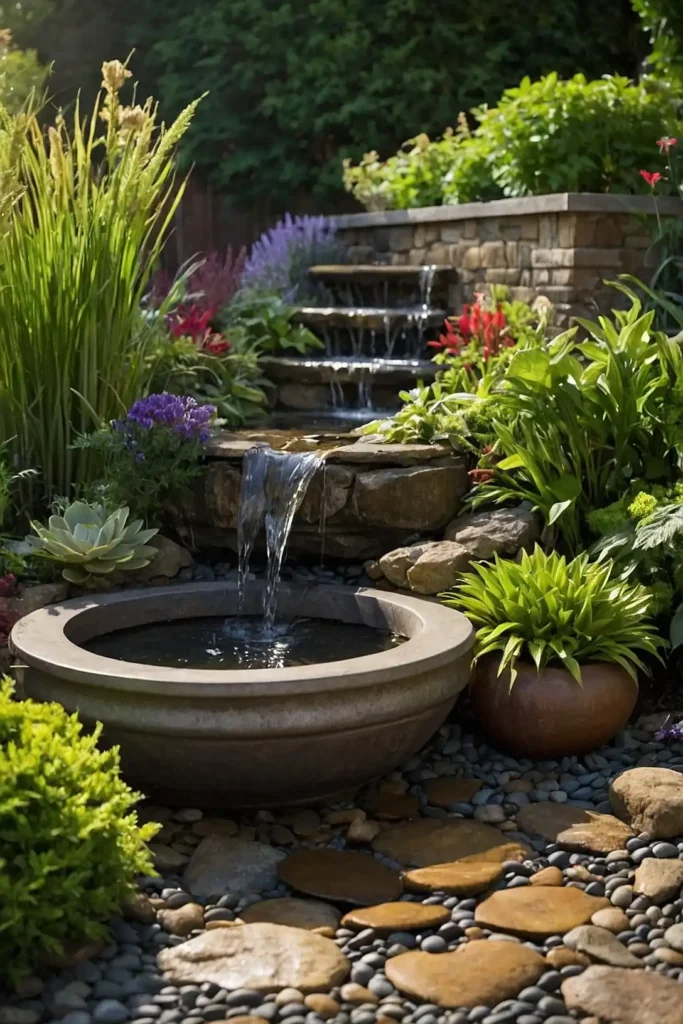
Add a small fountain or water basin to bring the soothing sound of water into your garden. Moving water creates tranquility and attracts more birds to your space.
Choose something with an aged appearance—copper develops a beautiful patina, while stone or concrete weathers gracefully.
Position it where you can hear the gentle splashing from nearby seating areas.
21: Plant Flowering Bulbs Everywhere
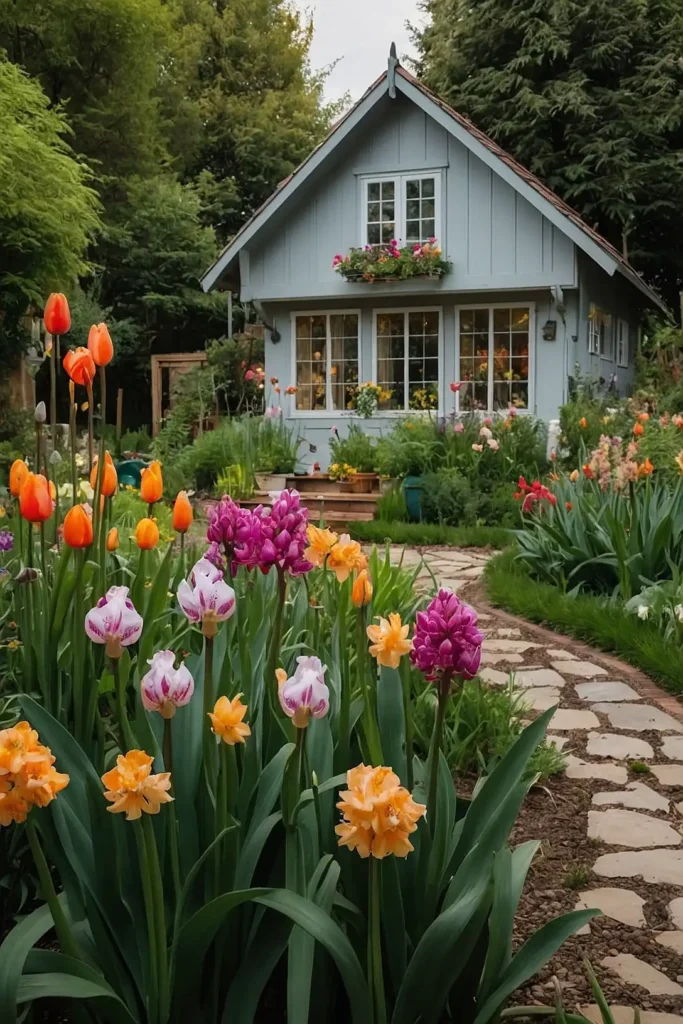
Tuck spring bulbs throughout your garden beds for early seasonal interest before perennials fill in. This layered approach ensures color from early spring onwards.
Daffodils, tulips, and alliums provide welcome color after winter.
Plant them between perennials where their fading foliage will be hidden by emerging summer growth.
22: Create a Sunflower Forest
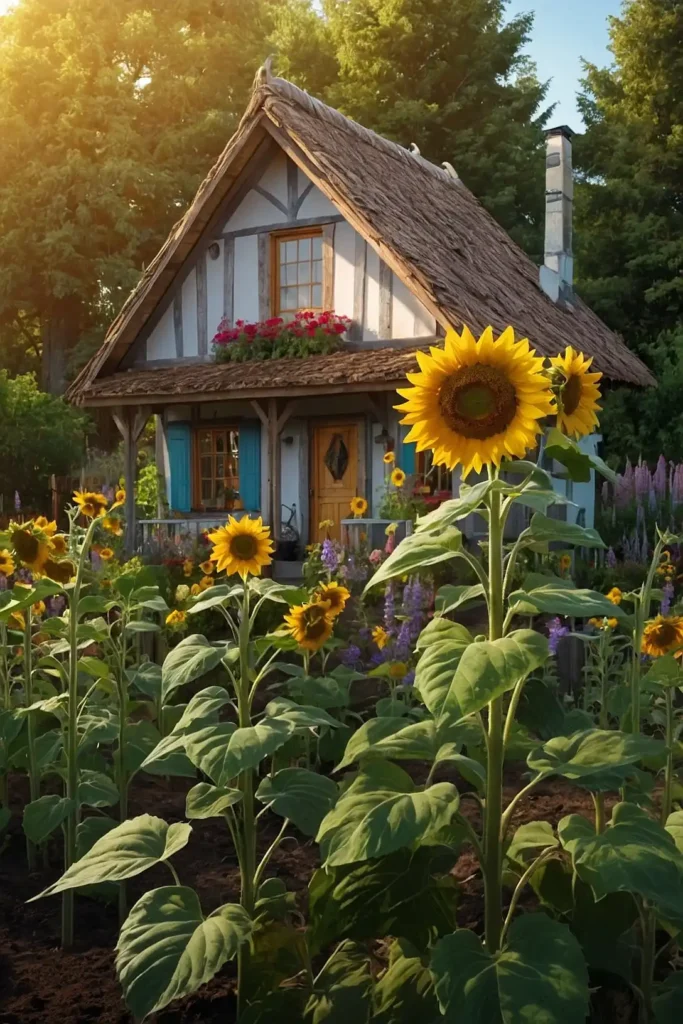
Dedicate a sunny corner to growing a dense planting of various sunflower varieties. This creates a magical, towering feature that delights visitors of all ages.
Mix heights and colors from dwarf varieties to mammoth 12-footers.
The resulting “forest” becomes a playful hideaway for children and produces seeds for birds in autumn.
23: Use Reclaimed Materials
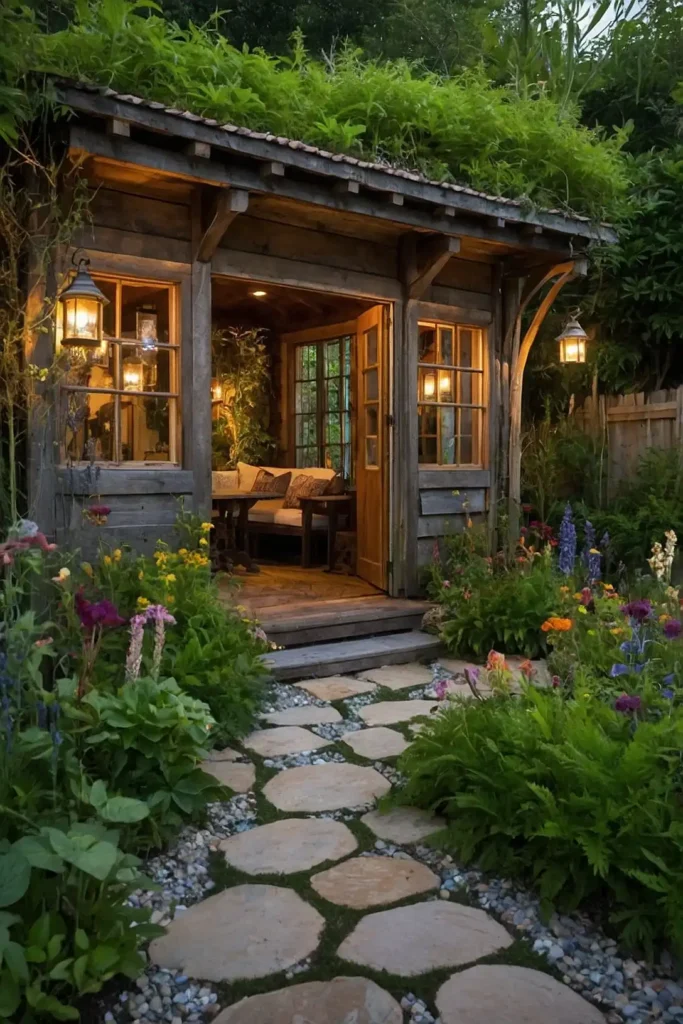
Incorporate salvaged architectural elements like old windows, gates, or even bicycle wheels as garden structures.
These unexpected details add character and history to new gardens.
Transform an old door into a garden gate or window frames into trellises.
These weathered materials bring immediate maturity to your garden while reducing landfill waste.
24: Plant a Butterfly Garden
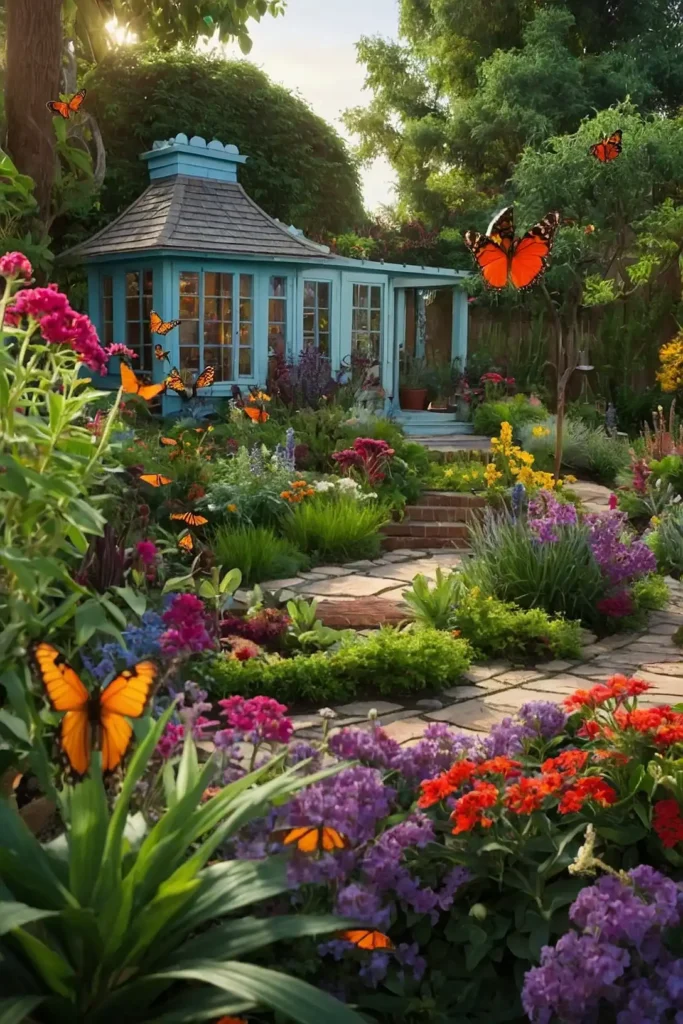
Dedicate an area to nectar-rich flowers that attract butterflies and other pollinators.
This brings movement, color, and ecological benefits to your cottage garden.
Include butterfly favorites like echinacea, butterfly bush, asters, and milkweed.
Plant in drifts of color rather than single specimens to create more visible landing pads for pollinators.
25: Add Climbing Structures
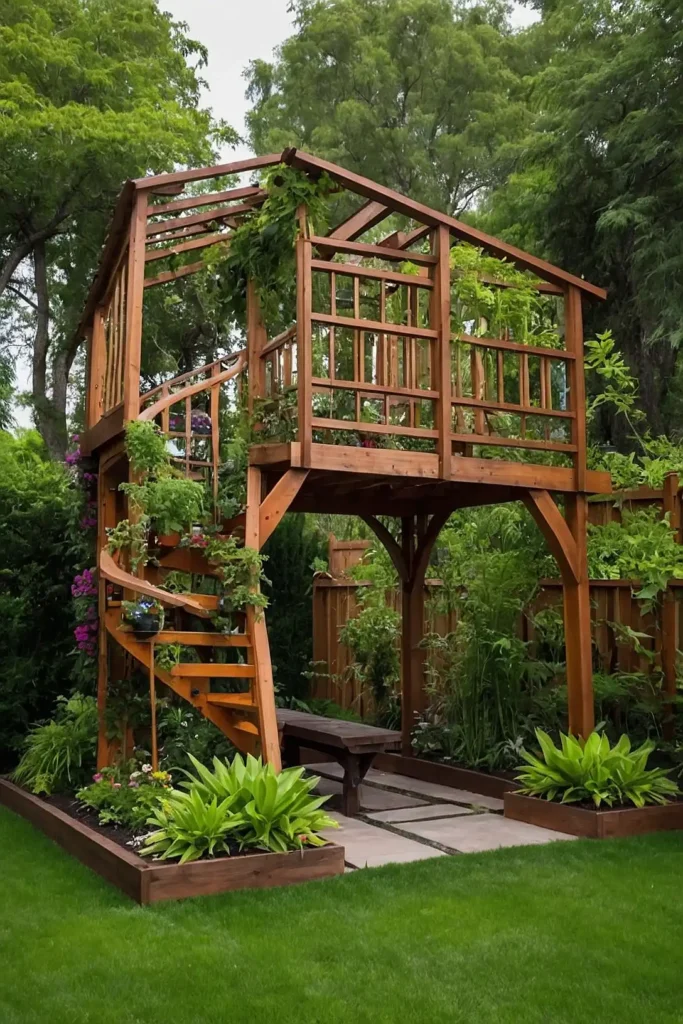
Install obelisks, trellises, and tepees throughout your garden for vertical interest and support for climbing plants.
These structures add architecture and maximize growing space.
Position them to create height within borders or as standalone features.
Cover them with sweet peas, morning glories, or clematis for seasonal beauty that draws the eye upward.
26: Embrace Four-Season Interest
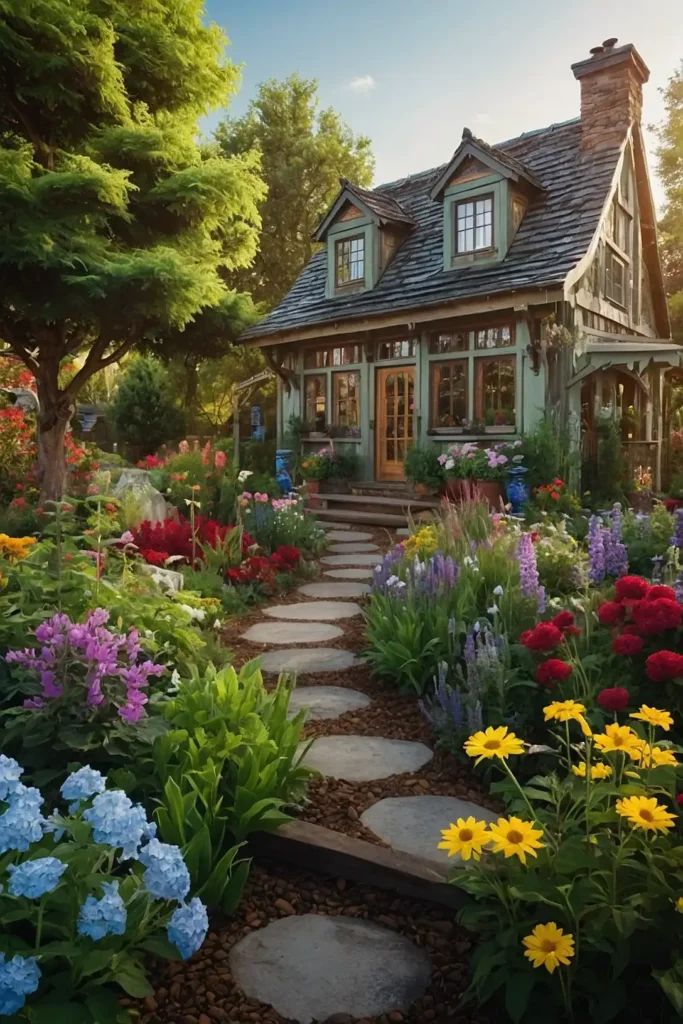
Plan your garden to showcase beauty in every season, not just summer. This approach ensures year-round enjoyment of your outdoor space.
Include spring bulbs, summer perennials, fall seed heads, and winter structural elements like ornamental grasses and evergreens.
Consider bark texture and branch patterns for winter interest when selecting shrubs.
27: Allow Meandering Edges

Create soft, billowing borders that spill slightly onto paths rather than maintaining rigid edges. This relaxed approach epitomizes the cottage garden style.
Allow plants like catmint, hardy geraniums, and alyssum to cascade beyond their boundaries.
This blurring of lines between path and border creates the romantic, established feel that makes cottage gardens so appealing.
Conclusion
Your cottage garden should reflect your personality while embracing the charming abundance this style celebrates.
Start small, be patient, and watch as your magical retreat evolves into a haven for both wildlife and your soul.

